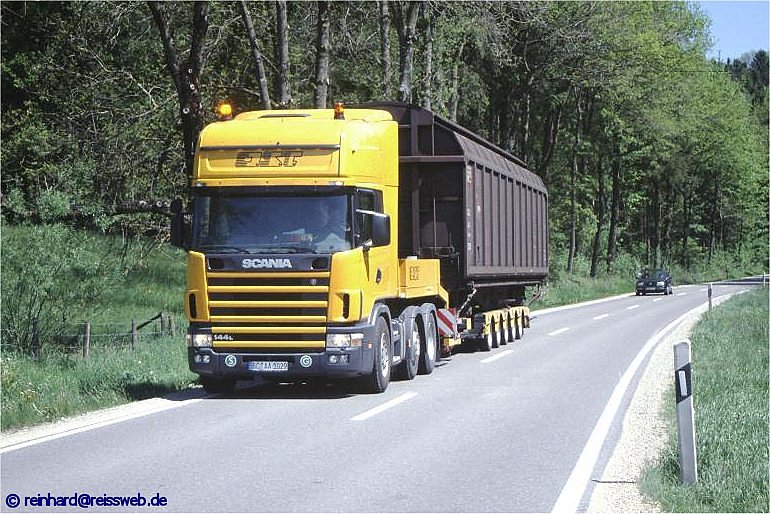by Sir Ray
We've discussed systems like freight car elevators before, but recently I found something while reading about London's erstwhile Bishopgate's Good Station on 'Diused Stations in the UK' that looks just as interesting - small turntables for freight cars (marked on this Plan of Bishopgate (bottom level) - as circles with crosses in them, serving sidings 90deg off the mains (also note the 3 freight car 'hoists'/elevators this station one had); here (from the same site) is an painting of Manchester Liverpool Road station showing those turntables. I don't know if these turntable/siding systems were used in the US (perhaps not, as US & Canadian rolling stock grew fairly quickly, easily overshadowing the standard UK 2 axle wagons by the late 1800s), but still I think they're fascinating (I bet those guys who had to manhandle speeders from the speeder-shed track 90deg onto the main in the olden days wished they had such turntables - maybe some lucky ones did  ).
).
I tried to think of other funky methods of freight car handling, besides carfloating, which is it's own huge topic; and besides operational type systems such as winching railcars with a stationary winch (incline planes may fit in this category), car poling, flying switches and so on, which while interesting in their own way, don't require odd track motions like rotation or levitation.
I did come up with one 'funky' system that's fairly common nowadays - rotary coal dumpers (I wonder how often the non-rotating ends of two adjacent cars are hooked together, so when the gondola starts to rotate it's 'over' for that draft gear).
Also, I vaguely remember (in a railroad book from the 1960s) some sort of truck-based 'car-float' operation, where a railcar was moved onto a truck-trailer with rails, and hauled via road to a off-railroad consignee (much like a land-based car-float).
Anyone else have other odd track-based schemes to add?
I tried to think of other funky methods of freight car handling, besides carfloating, which is it's own huge topic; and besides operational type systems such as winching railcars with a stationary winch (incline planes may fit in this category), car poling, flying switches and so on, which while interesting in their own way, don't require odd track motions like rotation or levitation.
I did come up with one 'funky' system that's fairly common nowadays - rotary coal dumpers (I wonder how often the non-rotating ends of two adjacent cars are hooked together, so when the gondola starts to rotate it's 'over' for that draft gear).
Also, I vaguely remember (in a railroad book from the 1960s) some sort of truck-based 'car-float' operation, where a railcar was moved onto a truck-trailer with rails, and hauled via road to a off-railroad consignee (much like a land-based car-float).
Anyone else have other odd track-based schemes to add?





